City flag sparked six-decade romance
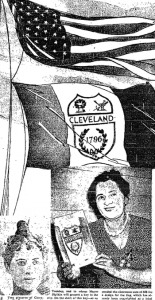
Republicans and Democrats will soon gather for their national political conventions in Cleveland, Ohio, and Philadelphia, Pennsylvania, respectively. There are sure to be plenty of American flags and lots of red-white-and-blue bunting on display. But what about the flags of the municipalities welcoming the delegates? In one case, a city flag actually kindled a romance that lasted more than six decades.
“Cleveland should have a civic emblem – a Cleveland flag,” said the opening sentence of an article in the city’s Plain Dealer newspaper on April 26, 1895. The need for a city flag was “the consensus of opinion in every direction.”
What Clevelanders realized, the story continued, is that their hometown had “no distinguishing emblem that represented the thriving city” on Lake Erie. The pressure to make a swift decision on a design for a municipal flag arose from the fast-approaching 1896 centennial of the city. It had been founded in 1796 (now 220 years ago) by Moses Cleaveland.
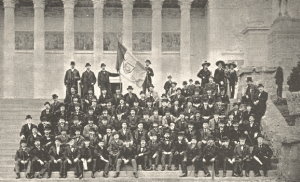
After a prize of $50 was offered to the winning designer of the municipal flag, more than two dozen suggestions came into City Hall. The judges rejected those that were so busy with symbols as to be incomprehensible and entries that included the American flag in the design. Also tossed aside were all-white banners, which were deemed to be dirt-catchers that would literally smudge the name of the city.
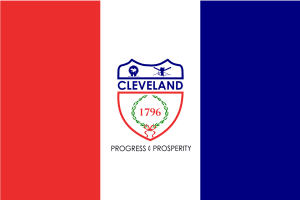 Finally, the judges came to a unanimous decision, and the city had its banner. It debuted not in Cleveland, but at the Cotton States and International Exposition in Atlanta. There was also another Cleveland on hand: President Grover Cleveland, who officially opened the fair.
Finally, the judges came to a unanimous decision, and the city had its banner. It debuted not in Cleveland, but at the Cotton States and International Exposition in Atlanta. There was also another Cleveland on hand: President Grover Cleveland, who officially opened the fair.
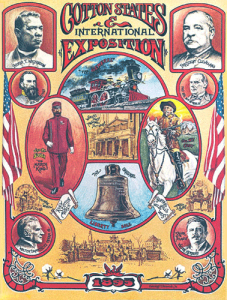
The winner of the flag contest was Susan Hepburn, a Cleveland teenager who was an art school graduate there, but who was then living in Columbus. A Plain Dealer reporter, Robert Beach, was dispatched to deliver the prize money to her in the form of 50 silver dollars, which he clumsily spilled on the floor.
Hepburn’s banner consists of three vertical bars, colored red, white and blue, a feature the judges loved because the stripes ran counter to Old Glory’s. In the center lies the Cleveland coat of arms. It also has the name of the city in blue and its founding year in red.
Two sets of images lie above the date: an anvil, hammer and wheel on the left; an anchor, windlass and oars on the right. Those items reflect Cleveland’s industrial and maritime pluses by virtue of being situated on a Great Lake. Under the images and words is a motto: “Progress and Prosperity.”
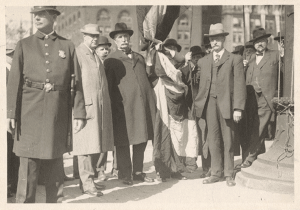
The Plain Dealer assured its readers that “Cleveland may well be proud of its new emblem and the fame of the city cannot but be enhanced by its display.”
Susan Hepburn made some progress and prosperity of her own. Less than a year after her winning flag design was chosen, the teenager married the reporter who had given her the $50 in silver. The duo remained together well into their golden years, not separating until his death 63 years after they wed.
(Next week: Philadelphia’s city flag.)
